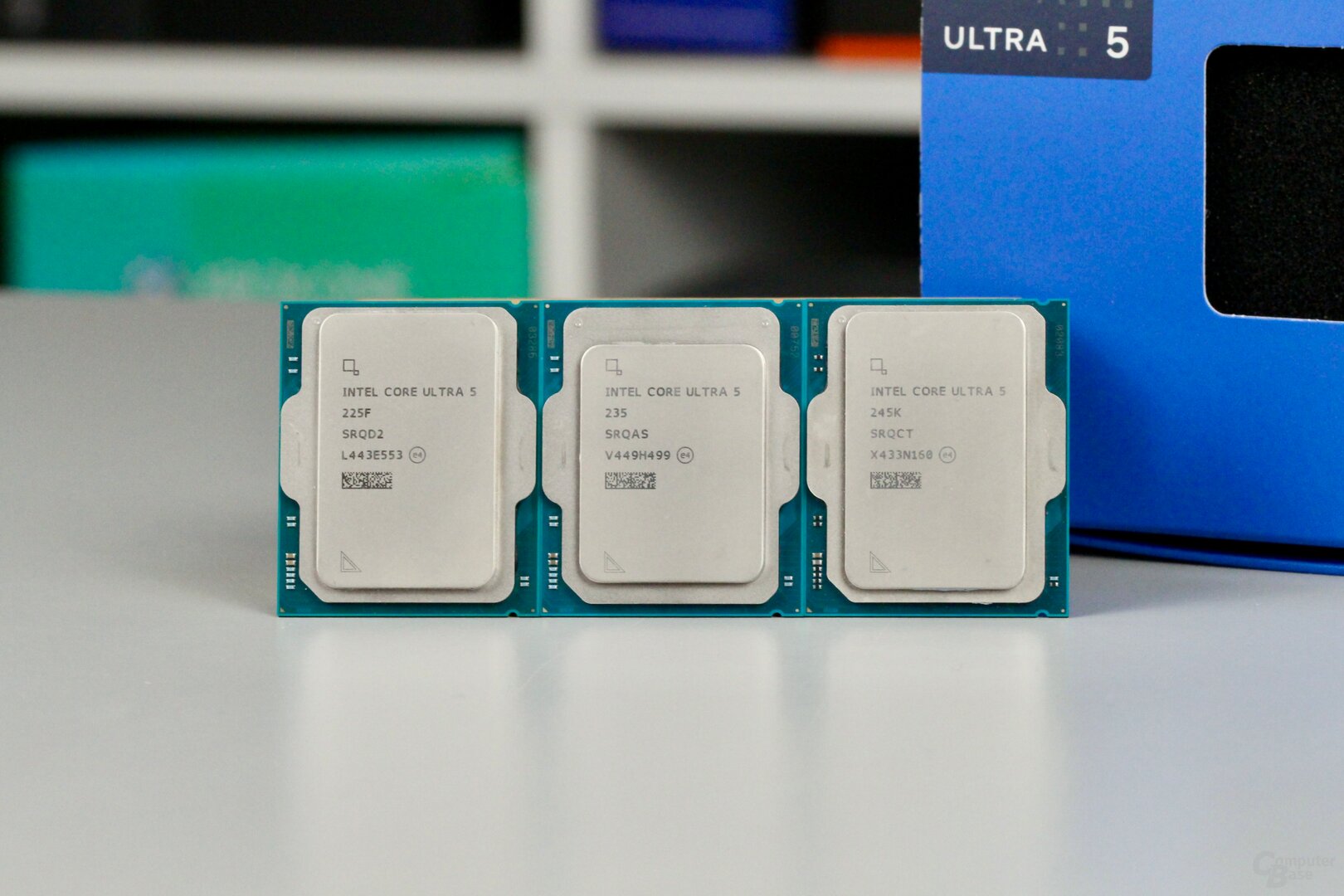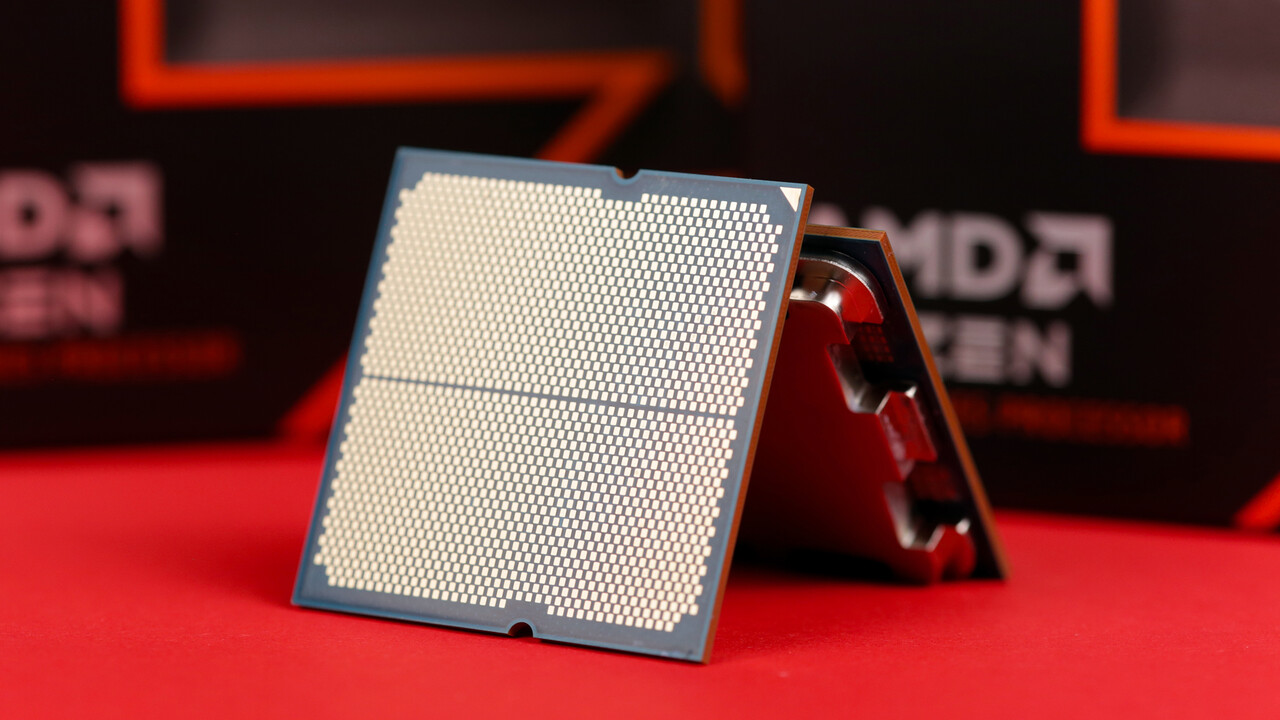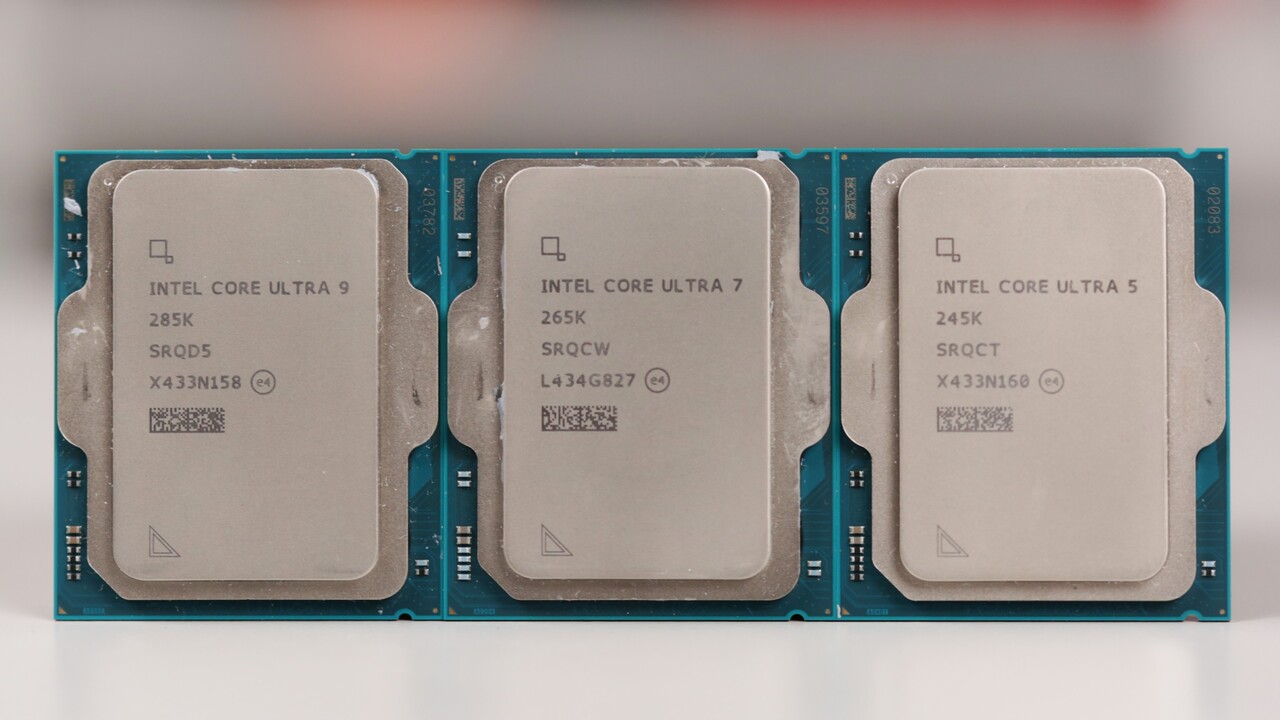Intel Core Ultra 5 225f & 235 in the Test: Highly Effective Rivals for AMD Ryzen 62 Comments

After a weak start in January, Intel’s smaller Ultra 200 processors are now widely available. Time for a review of the Ultra 5 225f and Ultra 5 235. Both offer a technically coherent performance that fits within the portfolio. In terms of price, however, there’s still a problem: their predecessors and competitors cost significantly less. Contents 1 very efficient rival for AMD Ryzendie model range from Intel Core Ultra 200s Intel Core Ultra 235 and 225f in detail The platform has matured, IPO comes 2 gaming benchmark performance ratings for FPS and frametimes Anno 1800 Avatar Avowed Baldur’s Gate II Cyberpunk 2077 Dragon’s Dogma 2 F1 24 Frostpunk 2 Ghost of Tsushima Homeworld 3 Horizon Forbidden West Marvel’s Spider-Man 2 Outcast-A New Beginning Sensua’s Saga: Hellblade 2 Star Wars Outlaws Starfield Warhammer 2 Microsoft Flight Simulator 2024 (not taken into account in Rating) Benchmarks in applications multi-core performance Single-core power 4 power consumption and temperature performance on the Windows desktop power consumption under full load Performance consumption in games Temperature 5 Efficiency in apps and game efficiency in applications Efficiency 6 prices, applications prices and price evaluation 7 Conclusion
Intel’s current Core Ultra 200S processor family, codenamed Arrow Lake, has also been expanding to slightly smaller models since January of this year, after only the K-series processors for the enthusiast target group were first presented in the fall of last year. But the masses are bringing Intel into the mainstream, and here it needs the Intel Core i5, or as they have been called since this year: the Intel Core Ultra 5. These should not only replace the previous generation, but also compete with the smaller AMD Ryzen 9000 and 7000. The test shows whether they can do that.
By the way, there are also two Intel Core Ultra 3 processors, but these have been classified as OEM products. They can and should appear primarily in complete systems in Asia, but not as a regular solution in retail—at least that’s how it’s planned so far. Learn more about Intel Arrow Lake in the two launch articles in the series:
Intel Core Ultra 200S in Review: Core Ultra 9 285K, 7 265K, and 5 245K. Intel Core Ultra 200S: All the Details on Intel’s Ryzen 9000 (X3D) Processor Arrow Lake-S
The Model Departs from the Intel Core Ultra 200S
In January, Intel added two more Core Ultra 5 245K (F) processors: the Core Ultra 5 245 and the Core Ultra 5 245T. These include the Core Ultra 5 in two classes: the 235 and 225. There are also derivatives, T models with lower power consumption or without active integrated graphics (F). Intel’s tabular structure is as follows. Intel Arrow Lake-S Model Range AKA Core Ultra 200 Model TDP / MPT Kernel Base Clock
(P-Cores / E-Cores) Turbotakt
(P-CORES / CORES E) TVB TBMT 3.0 TBT 2.0 Marktpreis (plateau) Core Ultra 9 285K 125/250 W 8P + 16E (24) 3.7 | 3.2 5.5 | 4.6 5.7 5.6 5.5 AB 598 EURO CORE ULTRA 9 285 65/182 W 8P + 16E (24) 2 5.4 | 4.6 5.6 5.5 5.4 AB 581 Euro Core Ultra 9 285T 35/112 W 8p + 16e (24) 1.4 | 1.2 5.3 | 4.6 N/A 5.4 5.3 AB 594 Euro Core Ultra 7 265K 125/250 W 8p + 12e (20) 3.9 | 3.3 5.4 | 4.6 N / A 5.5 5.4 AB 356 Euro Core Ultra 7 265KF 125/250 W 8P + 12E (20) 3.9 | 3.3 5.4 | 4.6 N / A 5.5 5.4 AB 345 Euro Core Ultra 7 265 65/182 W 8p + 12e (20) 2.4 | 1.8 5.2 | 4 AB 353 Euro Core Ultra 7 265f 65/182 W 8p + 12e (20) 2.4 | 1.8 5.2 | 4.6 N/A 5.3 5.2 AB 340 Euro Core Ultra 7 265t 35/112 W 8p + 12e (20) 1.5 | 1.2 5.2 | 4.6 N/A 5.3 5.2 AB 394 5 245K 125/159 W 6P + 8E (14) 4.2 | 3.6 5.2 | 4.6 N / A N / A 5.2 AB 284 EURO CORE ULTRA 5 245KF 125/159 W 6P + 8E (14)4.2| 3.6 5.2 | 4.6 N / A N / A 5.2 AB 242 EURO W 6P + 8E (14) 3.5 | 3.6 5.1 | 4.5 n / a n / a 5.1 – Core Ultra 5 245t 35/114 W 6p + 8e (14)2.2|1.7 5.1|4.5 N/A N/A 5.1 – Core Ultra 5 235 65/121 W 6p+8e(14|3.965/121 5.0|4.4 N/A N/A 5.0 AB 275 Euro Core Ultra 5 235T 65/121 W 6P + 8E (14) 2.2 | 1.6 5.0 | 4.4 N / A N / A 5.0 – Core Ultra 5 225 65/121 W 6P + 4E (10) 3.3 | 2.7 4.9 | 4.4 N / A n / a n / a n / a n / a n/a n/a n/a n/a n/a n/a n/a n/a n/a n/a n/a n/a n/a n/a n/a n/a n/a n/a n/a n/a n/a n/a n/a n/a n/a n/a n/a n/a n/a n/a 4.9 AB 253 Euro Core Ultra 5 225F 65/121 W 6P + 4E (10) 3.3 | 2.7 4.9 | 4.4 N/A N/A 4.9 AB 234 Euro Core Ultra 5 225T 35/114 W 6P + 4E (10) 2.5 | 1.9 4.9 | 4.4 N/A N/A 4.5 – 1.9 4.9 | 4.4 N/A N/A 4.9 in ghz
TVB = Thermal Boost (Max. 2 Kerne)
TBMT 3.0 = Turbo Boost Max Technology 3.0 (Max. 2 Kerne)
TBT 2.0 = Multi-core Turbo (All Core)
Intel Core Ultra 235 and 225f in detail
The most significant difference between the two processors, which now mark the entry into the LGA 1851 base, is the number of available efficiency cores (e-cores). The Intel Core Ultra 5 235 model, like the 245 variants, relies on eight e-cores in addition to the 6 P cores, while the 225 only has four e-cores.
Similar, but not the same
However, the implementation can be very different. Because, as has been known for years with (some) CPUs in the 5 classes, the chips can differ despite the same model number. With the Core Ultra 5 200S, this is even superficially visible, as the model with the smaller chip also receives a smaller heat sink. Intel Core Ultra 5 200S IM Review
Intel Core Ultra 5 200S IM Review
8p + 16e or 6p + 8e Under the Hood
 As with the Intel Core Ultra 5 225F, which was the case in previous generations with 1440F, 13400F, 12400F, etc., it can be based on both the larger and smaller CPU stepping.
As with the Intel Core Ultra 5 225F, which was the case in previous generations with 1440F, 13400F, 12400F, etc., it can be based on both the larger and smaller CPU stepping.
The B0 step, which can be found in the test model, means that the remaining ramp of the large chip is used here. This is because the 8p + 16e chip (e.g., Core Ultra 9 285k) is also present under the large HeatSprider, of which only 6p + 4e are active. This processor is also available via A0, then with the 6p + 8e chip known from the 235. In the past, there were sometimes differences in cache expansion, this is not the case with Arrow Lake. The difference could only be seen in the performance realization, but more on that later.
Up to 121 watts and Cudimm support
Unlike last time, Intel has no longer cut back on the storage clock in the smaller processors of the series. Even the smallest Core 5 Ultra can use Cudimms, with a specified clock speed of 6,400 mbps, and a maximum memory expansion of 256 GB—across four slots, albeit with a much lower bar. DDR5-5600 is specified without Cu-DIMMs.
DDR5-6400 is only available with Cudimms and one DIMMM slot per channel, for example, with boards that only have two slots in UDIMMS and Cudimms in two slots per channel up to DDR5-5600, whether single or dual-rank Lake-S.
As all previous Intel Arrow Lake benchmarks have shown, this generation is extremely reliant on fast memory; in many cases, it only offers additional performance over its predecessor, in addition to the increased IPC. This memory will therefore also be used in the benchmark.
There is no difference in TDP classification compared to previous Intel solutions from previous generations. 65 watts is defined as a PL1 value (continuous power consumption); in turbo (PL2), both can increase to 121 watts in the short term. The 65 watts is definitely a hard limit, which the main boards also implement correctly: after 28 seconds, the CPUs end there, even if they also want to use more than 110 watts – like the handbrake.
The platform has matured, the IPO is coming
Arrow Lake and the underlying platform around the LGA 1851 socket and, for example, the Z890 chipset have been progressing since the beginning of fall 2024. After starting with various teething problems, especially in the processor area, it now provides a solid foundation, but it is still receiving a wide range of updates. Intel recently upgraded the microcode to version 117, and the Me firmware has also been updated again. All of these measures should help make Arrow Lake a little more rounded and move forward.
At the end of April, a performance update for K processors will also be released, already known in China as the Intel Performance Optimizer (IPO). Intel will have an overclocking guarantee for some K processors, with more power being achieved through more cycles and, above all, higher TDPs.
In the end, Intel is finally taking a step back and thus giving up the efficiency achieved: you are once again buying a little extra performance through the crowbar, but only without releasing new processors. Before this, for example, an Intel Core i9-14900KS with 320 watts as a PL2 Value Arrow Lake could now top it up with 350 watts.
Page 1/7 Next page
Gaming Benchmarks Topics: Intel Intel Arrow Lake Intel Core Ultra Processors Image Overview

Marc deciphers processors by testing their performance for gaming, content creation, and artificial intelligence.


